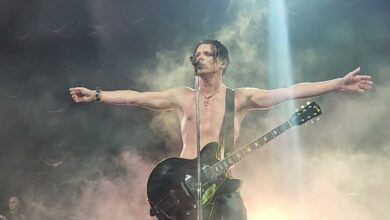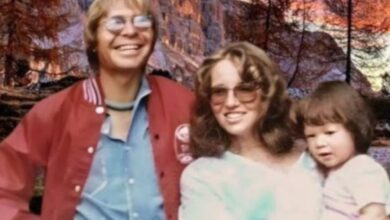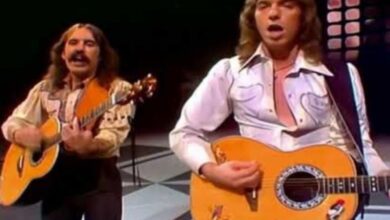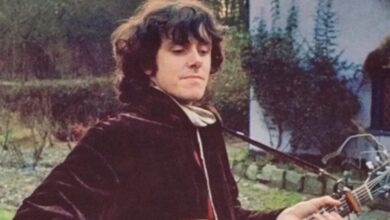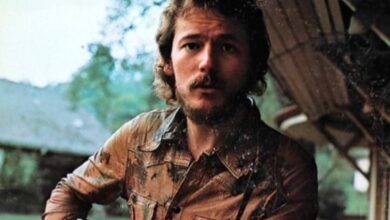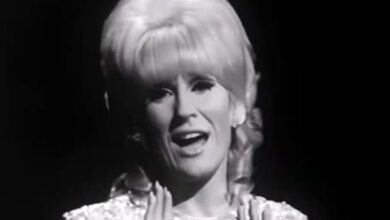Jelly Roll and Jennifer Hudson Shine at St. Peter’s Square with Powerful Jubilee Year Performances
St. Peter’s Square has always been a place of profound symbolism, but on September 13, 2025, it became something else entirely—a global concert hall under the Roman sky. The occasion was the Vatican’s Jubilee Year and the World Meeting on Human Fraternity, a celebration that drew tens of thousands into the square for an unprecedented evening of music, unity, and reflection. For the first time in nearly two thousand years, the square hosted a massive public concert, and it did so with a lineup that was as unexpected as it was star-studded. Among those taking the stage were Jelly Roll and Jennifer Hudson, two powerhouse performers from very different musical worlds, united in a night of history and harmony.
The scale of the event was staggering. Pilgrims, tourists, clergy, and locals filled the square in anticipation, waiting for what had been billed as a once-in-a-lifetime concert titled Grace for the World. Drones hovered overhead, ready to paint light displays across the Vatican sky, while the marble colonnades of Bernini glowed in carefully arranged lighting. There was an air of reverence, but also of curiosity—how often does country rap, gospel soul, and classical opera converge in front of the world’s most iconic basilica?
Jelly Roll’s entrance carried the raw humility that has fueled his rapid rise. He chose to perform “Hard Fought Hallelujah,” a song that has already become a modern hymn of resilience. Standing beneath the looming façade of St. Peter’s Basilica, his gravel-etched voice poured through the square, telling a story of pain, perseverance, and redemption. The irony of singing about scars and salvation in the very heart of Christendom was not lost on the crowd. Many were moved to tears, swaying in the night air as his words reverberated like a sermon stitched into song.
Jennifer Hudson, ever the diva of soul and stage, followed with a performance that combined elegance and thunder. Her duet with Andrea Bocelli on “The Prayer” was one of the night’s crown jewels, bringing together one of the world’s most celebrated opera voices with Hudson’s soaring gospel tones. The pairing drew gasps of awe from the audience. Bocelli’s classical poise wrapped around Hudson’s powerhouse delivery, creating a balance of grace and grit that perfectly encapsulated the evening’s theme of unity across difference.
The rumor of a joint “Hallelujah” between Jelly Roll and Hudson spread quickly online, with fan-posted clips labeled accordingly. While the official setlist leaned toward Jelly Roll’s own “Hard Fought Hallelujah” and Hudson’s other performances, the overlap of their presence at this monumental event was enough to ignite imaginations. The symbolism of two such different artists standing under the Vatican lights made the idea of a shared “Hallelujah” feel almost inevitable, even if it wasn’t formally part of the night’s program.
Beyond individual performances, what struck many was the way the square itself seemed to transform. The architecture became part of the stage, with lighting rippling across the columns like brushstrokes on canvas. At moments, the basilica itself appeared to glow in time with the music. The drone show above added another layer—patterns of doves, crosses, and abstract light formations sweeping over the audience, blending technology with timeless tradition in a display of modern spectacle meeting ancient sanctity.
The event’s co-direction by Pharrell Williams and Andrea Bocelli added a distinctive polish. Pharrell’s flair for cultural crossovers paired with Bocelli’s deep sense of classical legacy resulted in a program that felt both daring and reverent. It was a night where gospel harmonies and rap cadences brushed up against operatic arias, each treated with equal respect. The Vatican, so often seen as a bastion of tradition, opened itself to an evening that was unafraid of contrast.
For Jelly Roll, this performance marked a personal pilgrimage. Coming from Nashville’s rougher edges, with a life story carved by hardship, to singing words of redemption at St. Peter’s was nothing short of extraordinary. His meeting with Pope Leo XIV earlier in the day underscored just how far his journey had taken him—from street struggles to Vatican stages, carrying with him a message that redemption is possible for anyone.
Hudson’s presence carried a different kind of weight. Known for her ability to channel raw emotion into pristine vocal lines, she embodied the universal appeal of gospel-rooted soul. Her voice carried like a cathedral bell across the square, reverberating through stone and sky, reminding everyone that music can serve as both prayer and performance. The respect she commanded was evident in the silence that greeted her final notes—a silence filled with awe, not absence.
The audience response throughout the night was a blend of reverence and release. Applause came in waves, but it was the faces—streaked with tears, lit with smiles—that told the truest story. Pilgrims who had traveled thousands of miles found themselves shoulder-to-shoulder with locals, tourists, and clergy, all joined in the shared language of song. In a world often fractured by division, the square that night felt like a temporary city of harmony.
Cultural commentators quickly seized on the symbolism. To see artists like Jelly Roll and Jennifer Hudson—voices born from traditions far from the Vatican—singing on such a stage was a reminder that music bridges gaps no doctrine can fully close. It underscored the Jubilee’s theme of fraternity: the idea that across backgrounds, nations, and faiths, people can still find unity in shared melodies and stories.
The Jubilee Year itself gave the performance added resonance. Traditionally marked by pilgrimage, reflection, and renewal, this edition leaned into global inclusivity. Music became the vehicle, and the St. Peter’s Square concert its most visible emblem. Where past Jubilees might have emphasized ritual, this one embraced spectacle—without losing its sense of sacred purpose.
As the night closed, and the final notes faded into the Roman night, the applause was joined by cheers that sounded more like a stadium than a sanctuary. People lingered long after the music ended, reluctant to leave, as though holding onto the magic just a little longer. The Vatican had become a stage, but also a space of shared humanity, where faith, art, and history intertwined.
In the days following, clips of the performances circulated widely online, sparking conversations far beyond Catholic circles. Some marveled at the courage of the Vatican to host such a diverse roster; others reflected on the personal journeys of the artists involved. What united nearly all the responses was a sense of gratitude for having witnessed a cultural moment that blurred the line between the sacred and the popular.
The concert at St. Peter’s Square will be remembered as more than just another Jubilee event. It was a statement—that music, no matter its genre, carries within it the power to transcend. Jelly Roll and Jennifer Hudson, with voices as different as the roads they traveled, stood as proof that when the world listens together, even the most unlikely harmonies can become unforgettable.
